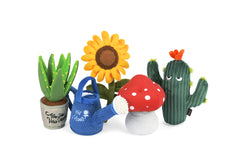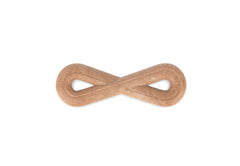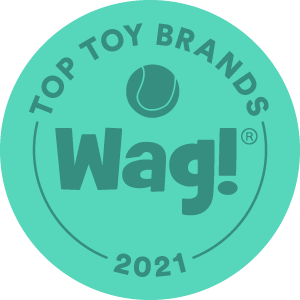Dental disease is one of the most common medical conditions observed in canines. According to research conducted by Packaged Facts in 2018, dental diseases affect nearly 80% of dogs. The same percentage of dogs show signs of gum disease, also known as Periodontitis, by the age of three, often leading to tooth loss and other infections that can spread to the internal organs. Dental hygiene is of utmost importance. While research shows that a large number of pet owners (61%) do not brush their dog’s teeth, daily oral care can help prevent any critical conditions and keep your pet healthy.
Keeping your dog’s mouth clean is an excellent way to help prevent diseases. This includes infections of the teeth, gums, and other organs from the spread of bacteria from the mouth. This is why it is strongly recommended for all pet owners to begin a home dental hygiene routine. Besides oral hygiene, a dog’s optimal care requires parents to invest in flea medicine for dogs. Subscribing to a monthly subscription that delivers the best flea treatment for dogs at your doorstep is a convenient and affordable way to maintain your pet’s overall health and happiness. Ahead, take note of the following tips to learn how to optimize your dog’s oral healthcare.
Tip 1 - Consult Your Pet’s Veterinarian

The first step to any dental hygiene plan is to see your veterinarian. Many types of Periodontal disease are hard to detect, and owners may not do it themselves. In contrast, a professional such as a veterinarian will be able to see that kind of disease. Pet parents will need their veterinarian’s knowledge to determine the health of their pet’s teeth. Every visit that the owners go to visit the vet should include a dental evaluation. Dental disease can cause bad breath and discoloration of the teeth. However, owners should note that the effects can often be much severe. For instance, Canine Gingivitis is an inflammation caused by plaque build-up along the gum line, just like in humans. Regular brushing will stop the Gingivitis by sweeping the plaque away from the gumline. As gum disease becomes advanced, it can cause Periodontitis, an infection of the tissues around the gum. This condition can be excruciating for your dog and can also lead to permanent tooth loss.
Tip 2 - Be Prepared With the Right Tools

The first step for parents to practice an oral routine is to have the right tools for the job. Dog-appropriate toothbrushes and toothpaste are available across all pet stores or from your veterinarian. Pet toothpaste comes in various flavors like beef, mint, chicken, etc., making brushing more tolerable and rewarding. It’s essential to use a soft-bristle toothbrush or finger brush made specifically for pets. In addition to brushing, pet owners must invest in several treats and toys to give their dogs to help them clean their teeth voluntarily. For instance, rawhide is an excellent option to clean the teeth and exercise the gums, as long as your vet says it’s okay for the pet. By chewing it, dogs get mechanical action on their teeth. Rubber chew toys with additional space/holes for treats or peanut butter can help the dog chew for longer to get to the goodies. The rubber ridges in the toys can help to clean the teeth thoroughly.
Tip 3 - The Importance of Brushing Your Dog’s Teeth

Plaque, or a composite of food and bacteria forms on your dog’s teeth everyday. If this isn’t removed within 36 hours, it begins to form tartar, leading to Periodontal disease. The signs of Periodontal disease pet owners may notice include bad breath or pain when chewing. The disease causes swelling to the gums and makes them tender, which can cause pain and bleeding and ultimately result in tooth loss. Pet owners can prevent this issue by daily brushing their dog’s teeth. It is ideal for pet parents to start brushing their dog’s teeth at the puppy-stage, to get them comfortable with the process. However, it is never too late to start. Pet parents need to introduce the process slowly and gradually with lots of positive reinforcement along the way.
Tip 4 - How to Get Your Dog Used to The Process of Brushing

Pet owners can start by simply moving their fingers inside the dog’s mouth, including their gums. Following this, owners can praise their dog with phrases such as, “Good job!’ and “Well done.’ Repeat this a few times, then add toothpaste to your finger to get the dog used to the flavor. Owners need to ensure that they use dog toothpaste and not human toothpaste or baking soda, as it can cause stomach upset or even vomiting. Dog toothpaste is designed to be swallowed and is made with special enzymes that help clean your dog’s teeth. The canines are the fang teeth, and the molars at the back of the mouth are essential teeth to clean as they often get the most plaque build-up. Owners need to brush gently at an angle by the gum line, continuing to pat your dog or calm them with your voice. Remember not to hurry the learning - if you can only get them comfortable with having you clean a few teeth at a time, it’s okay. You can work up the entire mouth slowly to not scare your dog or make it a stressful time for both of you.
Tip 5 - Watch What Your Dog Eats & Schedule Regular, Professional Cleanings

There are specially formulated dog foods that are made to control plaque and tartar. Infused enzymes and anti-bacterial agents in some dog treats can also help prevent oral disease. Furthermore, you can add products to your pet’s water that help keeps bacteria at bay. The bacteria formed from Periodontal disease can spread throughout the bloodstream into the dog’s internal organs. While your homecare will make a huge difference, pet owners will still need a supplement with professional cleanings. At your dog’s annual exam, your veterinarian can let you know just how often this is required. During a consultation, if the vet detects the disease, your pet will be required to be anesthetized and have a thorough tooth cleaning. Pet owners must wait at least ten days after the cleaning to allow their pet’s mouth to recover before beginning home dental care. Not all dogs can tolerate brushing, so parents must be sure that brushing their dog’s teeth isn’t causing harm to them.
There are also several treats made for pets, where they don’t break down by eating, but the dog has to properly chew on it to get it to their stomach. While such processes can work occasionally, the best way to maintain your dog’s dental hygiene is by visiting a vet, who can easily detect and help prevent any issues or health concerns related to the dog’s teeth.







